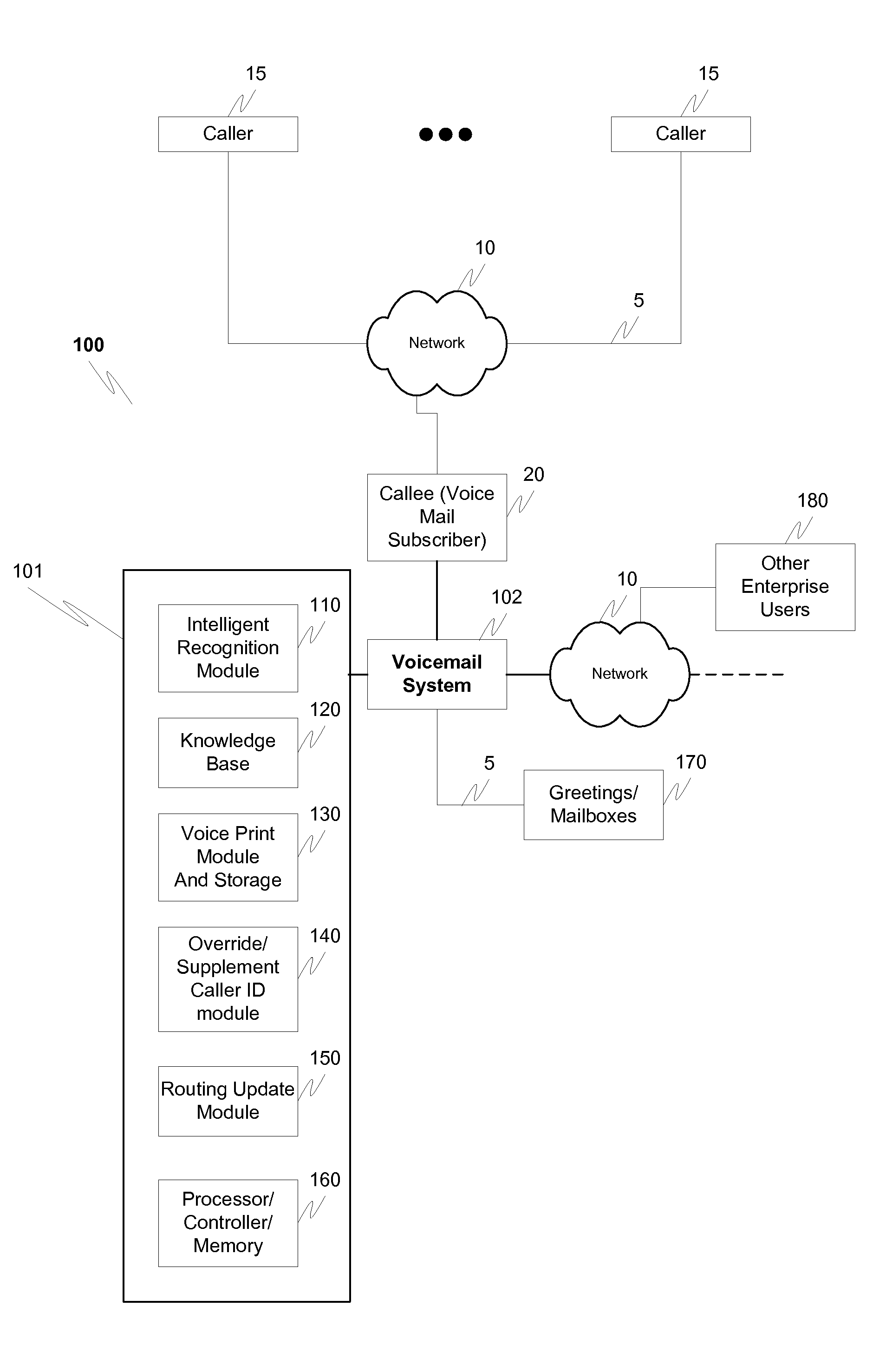Caller recognition by voice messaging system
- Summary
- Abstract
- Description
- Claims
- Application Information
AI Technical Summary
Benefits of technology
Problems solved by technology
Method used
Image
Examples
Embodiment Construction
[0041]The invention will be described below in relation to a communications environment. Although well suited for use with circuit-switched or packet-switched networks, the invention is not limited to use with any particular type of communications system or configuration of system elements and those skilled in the art will recognize that the disclosed techniques may be used in any application in which it is desirable to provide enhanced Caller id recognition. For example, the systems and methods disclosed herein will also work well with SIP-based communications systems and endpoints. Moreover, the various endpoints described herein can be any communications device such as a telephone, speakerphone, cellular phone, SIP-enabled endpoint, softphone, PDA, conference system, video conference system, wired or wireless communication device, or in general any communications device that is capable of sending and / or receiving voice and / or data communications.
[0042]The exemplary systems and me...
PUM
 Login to View More
Login to View More Abstract
Description
Claims
Application Information
 Login to View More
Login to View More - R&D
- Intellectual Property
- Life Sciences
- Materials
- Tech Scout
- Unparalleled Data Quality
- Higher Quality Content
- 60% Fewer Hallucinations
Browse by: Latest US Patents, China's latest patents, Technical Efficacy Thesaurus, Application Domain, Technology Topic, Popular Technical Reports.
© 2025 PatSnap. All rights reserved.Legal|Privacy policy|Modern Slavery Act Transparency Statement|Sitemap|About US| Contact US: help@patsnap.com



